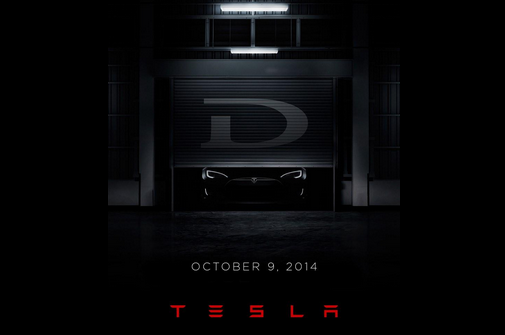
Elon Musk is many things: entrepreneur, inventor, explorer of the heavens — and, apparently, social media guru.
Musk set Twitter ablaze last night with a double entendre tweet intended to tease a new release from his Tesla electric-car company.
About time to unveil the D and something else pic.twitter.com/qp23yi59i6
— Elon Musk (@elonmusk) October 2, 2014
The D was referring to a new car model that Tesla will unveil on Oct. 9, but Twitter quickly channeled its inner 12-year-old boy. The tweet has been retweeted over 10,000 times and quickly became a way for people of all stripes to show off their one-liners.
Of course, the customary “That’s what she said” joke.
That’s what she said. RT @elonmusk: About time to unveil the D and something else pic.twitter.com/cs8X5yPcpm
— Scott Jordan (@codepath) October 2, 2014
And some more bedroom humor.
@elonmusk i tell my wife that all the time. — Sean M. Kelley (@RunSMK) October 2, 2014
And people staking claims to their favorite pick-up lines.
@Mister_Sommer @elonmusk Hey, that’s my pick up line! #citywalk — Ron (@TallyOkie) October 2, 2014
BuzzFeed editors sure have a great sense of humor.
I hope you are staying your mandatory 100 feet away from a school when you do it @elonmusk. — Andrew Kaczynski (@BuzzFeedAndrew) October 2, 2014
Er, we don’t quite get what you’re speculating on here, buddy.
Only a few days left before we can ses @elonmusk‘s D! Big, small? Who knows! RT About time to unveil the D…https://t.co/64UwETPZxs — Olivier Lambert (@Olivier_Lambert) October 2, 2014
This one sure seems to be waiting with bated breath.
I keep checking to see if @elonmusk has “unveiled the D” yet. Work it, dude. (in all seriousness, hoping there’s news on the X too!) — Meran K. (@meran_k) October 2, 2014
Hurry up, Musk. People are really beginning to get impatient now.
Did Elon Musk show everyone the D yet? — Adam Edwards (@EdwardsAdam) October 2, 2014
Pun meets more pun.
@elonmusk stay tuned for the first CEO D pic
— Bobby Reardon (@bobbyreardon1) October 2, 2014
Our favorite, bringing in #Bendgate into the D saga.
@elonmusk Hope the D doesnt bend like the 6S. @BoredElonMusk @TeslaMotors — Dilip Malave (@DilipMalave) October 2, 2014
And ultimately this one, calling it exactly what it is.
@BrucePurple @elonmusk actually it’s called marketing. Google it.
— MAD9 (@MAD9) October 2, 2014
For his part, Musk later said it was unintentional and a simple misunderstanding.
I love the Internet. Comments had me literally ROFL. No, it wasn’t intentional. Glad I didn’t mention the other letter!
— Elon Musk (@elonmusk) October 2, 2014
Perhaps, but Forbes reported that the automaker’s shares were up 3 percent Thursday morning — and now lots of people know about Tesla’s new model release. Expect several LinkedIn posts on what brands can learn from Elon Musk’s D joke.
More in Marketing

How the MAHA movement influenced food and beverage brands in 2025
The MAHA movement has come to stand for different things in different people’s eyes, depending on which initiatives they most closely follow.

Why Georgia-Pacific is turning its programmatic scrutinty to the sell side
The company is turning its attention to the sell side, zeroing in on the ad tech firms that move inventory for publishers — the supply-side platforms.

Future of Marketing Briefing: Why ‘just good enough’ is generative AI’s real threat to marketers
When characters and mascots are allowed to live inside generative systems, they stop being event-based and start becoming environmental.





